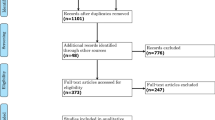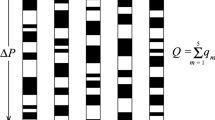Abstract
Using first principles of fluid and solid mechanics a comprehensive model of human intracranial dynamics is proposed. Blood, cerebrospinal fluid (CSF) and brain parenchyma as well as the spinal canal are included. The compartmental model predicts intracranial pressure gradients, blood and CSF flows and displacements in normal and pathological conditions like communicating hydrocephalus. The system of differential equations of first principles conservation balances is discretized and solved numerically. Fluid–solid interactions of the brain parenchyma with cerebral blood and CSF are calculated. The model provides the transitions from normal dynamics to the diseased state during the onset of communicating hydrocephalus. Predicted results were compared with physiological data from Cine phase-contrast magnetic resonance imaging to verify the dynamic model. Bolus injections into the CSF are simulated in the model and found to agree with clinical measurements.
Similar content being viewed by others
Abbreviations
- cAr:
-
Carotid artery
- Ar:
-
Arteries
- Al:
-
Arterioles
- Cp:
-
Capillaries
- Vl:
-
Veinules
- V:
-
Veins
- vSinus:
-
Venous sinus
- Lv:
-
Lateral ventricle
- 3V:
-
Third ventricle
- 4V:
-
Fourth ventricle
- SAS:
-
Cranial subarachnoid space
- sp.canal:
-
Spinal subarachnoid space
- br:
-
Brain
- exf:
-
Extracellular fluid
- xxL,R :
-
Signifying two equations, one for the left brain hemisphere and one for the right brain hemisphere
- xxR :
-
Right compartment
- xxL :
-
Left compartment
- \({{f}_{xx_{\rm in}}}\) :
-
Flow into the compartment
- \({{f}_{xx_{\rm out}}}\) :
-
Flow out of the compartment
References
Baledent O, Henry-Feugeas MC, Idy-Peretti I (2001) Cerebrospinal fluid dynamics and relation with blood flow: a magnetic resonance study with semiautomated cerebrospinal fluid segmentation. Invest Radiol 36: 368
Bering EA (1962) Circulation of the cerebrospinal fluid. J Neurosurg 19: 405
Bertram CD, Brodbelt AR, Stoodley MA (2005) The origins of syringomyelia: numerical models of fluid/structure interactions in the spinal cord. J Biomed Eng 127: 1099
Biot MA (1941) General theory of three-dimensional consolidation. J Appl Phys 12: 155
Biot MA (1955) Theory of elasticity and consolidation for a porous anisotropic solid. J Appl Phys 26(2): 182
Brown P, Davies S, Speake T, Millar I (2004) Molecular mechanisms of cerebrospinal fluid production. Neuroscience 129: 957
Czosnyka Z, Czosnyka M, Richards HK, Pickard JD (2002) Laboratory testing of hydrocephalus shunts–Conclusion of the UK shunt evaluation programme. Acta Neurochir 144(6): 525
Czosnyka M, Czosnyka Z, Momjian S, Pickard JD (2004) Cerebrospinal fluid dynamics. Physiol Meas 25(5): R51
Czosnyka Z, Cieslicki K, Czosnyka M, Pickard JD (2005) Hydrocephalus shunts and waves of intracranial pressure. Med Biol Eng Comput 43(1): 71
Boor C (2001) A Practical guide to splines. Springer, New York
DelBigio MR, Bruni JE (1988) Changes in periventricular vasculature of rabbit brain following induction of hydrocephalus and after shunting. J Neurosurg 69: 115
Dumoulin CL, Souza SP, Walker MF, Yoshitome E (1988) Time-resolved magnetic resonance angiography. Magn Reson Med 6(3): 275
Eklund A, Smielewski P, Chambers I, Alperin N, Malm J, Czosnyka M, Marmarou A (2007) Assessment of cerebrospinal fluid outflow resistance. Med Biol Eng Comput 45: 719
Fishman RA (1980) Cerebrospinal fluid in disease of the nervous system. W.B. Saunders Company, Philadelphia, pp 63–140
Gjerris F, Borgensen SE (1992) Pathophysiology of cerebrospinal fluid circulation. In: Crockard A, Hayward A, Hoff J (eds) Neurosurgery: the scientific basis of clinical practice. Blackwell Scientific, Cambridge, pp 147–168
Gosling RG, King DH (1974) Arterial assessment by Doppler-shift ultrasound. Proc R Soc Med 67: 447
Greitz D, Hannerz J, Rahn T, Bolander H, Ericsson A (1994) MR imaging of cerebrospinal fluid dynamics in health and disease. On the vascular pathogenesis of communicating hydrocephalus and benign intracranial hypertension. Acta Radiol 35(3): 204
Hakim S, Venegas JG, Burton JD (1976) The physics of the cranial cavity, hydrocephalus and normal pressure hydrocephalus: mechanical interpretation and mathematical model. Surg Neurol 5: 187
Kaczmarek M, Subramaniam RP, Neff SR (1997) The hydromechanics of hydrocephalus: Steady-state solutions for cylindrical geometry. Bull Math Biol 59(2): 295
Kim J, Thacker NA, Bromiley PA, Jackson A (2007) Prediction of the jugular venous waveform using a model of CSF dynamics. Am J Neuroradiol 28: 983
Kosteljanetz M (1989) Measurement of resistance to outflow: the bolus injection method. In: Gjerris F, Borgesen SE, Sorensen PS (eds) Proceedings Outflow of cerebrospinal fluid, pp 134–143
Lakin WD, Stevens SA, Tranmer BI, Penar PL (2003) A whole-body mathematical model for intracranial pressure dynamics. J Math Biol 46(4): 347
Linninger AA, Tsakiris C, Zhu DC, Xenos M, Roycewicz P, Danziger Z, Penn RD (2005) Pulsatile cerebrospinal fluid dynamics in the human brain. IEEE Trans Biomed Eng 52(4): 557
Linninger AA, Xenos M, Zhu DC, Somayaji MR, Kondapalli S, Penn RD (2007) Cerebrospinal fluid flow in the normal and hydrocephalic human brain. IEEE Trans Biomed Eng 54(2): 291
Loth F, Yardimci AM, Alperin N (2001) Hydrodynamic modeling of cerebrospinal fluid motion within the spinal cavity. J Biomech Eng 123(1): 71
Luo XY, Pedley TJ (1998) The effects of wall inertia on flow in a two-dimensional collapsible channel. J Fluid Mech 363: 253
Marmarou A (1973) A theoretical model and experimental evaluation of the cerebrospinal fluid system. Thesis, Drexel University, Philadelphia, PA
Marmarou A, Shulman K, Rosende RM (1978) A nonlinear analysis of the cerebrospinal fluid system and intracranial pressure dynamics. J Neurosurg 48: 332
Nield D, Bejan A (1999) Convection in porous media. Springer, New York
Pedley TJ (1980) The fluid mechanics of large blood vessels. Cambridge University Press, Cambridge
Pelc NJ, Bernstein MA, Shimakawa A, Glover GH (1991) Encoding strategies for three-direction phase-contrast MR imaging of flow. J Magn Reson Imaging 1(4): 405
Penn RD, Lee MC, Linninger AA, Miesel K, Lu SN, Stylos L (2005) Pressure Gradients in the Brain in an experimental model of hydrocephalus. J Neurosurg 102(6): 1069
Pellicer A, Gaya F, Madero R, Quero J, Cabanas F (2006) Noninvasive continuous monitoring of the effect of head position on brain hemodynamics in ventilated infants. Pediatrics 109(3): 434
Piechnik SK, Czosnyka M, Harris NG, Minhas PS, Pickard JD (2001) A Model of the Cerebral and Cerebrospinal Fluid Circulations to Examine Asymmetry in Cerebrovascular Reactivity. J Cereb Blood Flow Metab 21: 182
Raksin PB, Alperin N, Sivaramakrishnan A, Surapaneni S, Lichtor T (2003) Noninvasive intracranial compliance and pressure based on dynamic magnetic resonance imaging of blood flow and cerebrospinal fluid flow: review of principles, implementation, and other noninvasive approaches. Neurosurg Focus 14(4): 1
Segal M (2001) Transport of nutrients across the choroid plexus. Microsc Res Tech 52: 38
Smillie A, Sobey I, Molnar Z (2005) A hydroelastic model of hydrocephalus. J Fluid Mech 539: 417
Sorek S, Bear J, Karni Z (1988a) A non-steady compartmental flow model of the cerebrovascular system. J Biomech 21(9): 695
Sorek S, Feinsod M, Bear J (1988b) Can NPH be caused by cerebral small vessel disease? A new look based on a mathematical model. Med Biol Eng Comput 26(3): 310
Sorek S, Bear J, Karni Z (1989) Resistances and compliances of a compartmental model of the cerebrovascular system. Ann Biomed Eng 17(1): 1
Starling EH (1896) On the absorption of fluids from the connective tissue spaces. J Physiol 19: 312
Stevens S (2000) Mean pressures and flows in the human intracranial system, determined by mathematical simulations of a steady-state infusion test. Neurol Res 22(8): 809
Sweetman B (2007) Quantification of intracranial dynamics under normal and hydrocephalic conditions. Thesis, University of Illinois at Chicago, Chicago, IL
Ursino M, Lodi CA (1997) A simple mathematical model of the interaction between intracranial pressure and cerebral hemodynamics. J Appl Physiol 82(4): 1256
Wilcox RK, Bilston LE, Barton DC, Hall RM (2003) Mathematical model for the viscoelastic properties of dura mater. J Orthop Sci 8: 432
Zagzoule M, Marc-Vergnes J (1986) A global mathematical model of the cerebral circulation in man. J Biomech 19(12): 1015
Zhang L, Kulkarni K, Somayaji MR, Xenos M, Linninger AA (2007) Discovery of transport and reaction properties in distributed systems. AIChE J 53(2): 381
Zhu DC, Xenos M, Linninger AA, Penn RD (2006) Dynamics of lateral ventricle and cerebrospinal fluid in normal and hydrocephalic brains. J Magn Reson Imaging 24(4): 756
Author information
Authors and Affiliations
Corresponding author
Rights and permissions
About this article
Cite this article
Linninger, A.A., Xenos, M., Sweetman, B. et al. A mathematical model of blood, cerebrospinal fluid and brain dynamics. J. Math. Biol. 59, 729–759 (2009). https://doi.org/10.1007/s00285-009-0250-2
Received:
Revised:
Published:
Issue Date:
DOI: https://doi.org/10.1007/s00285-009-0250-2
Keywords
- Cerebrospinal fluid
- Communicating hydrocephalus
- Intracranial pressure
- Mathematical modeling
- Computational fluid dynamics




